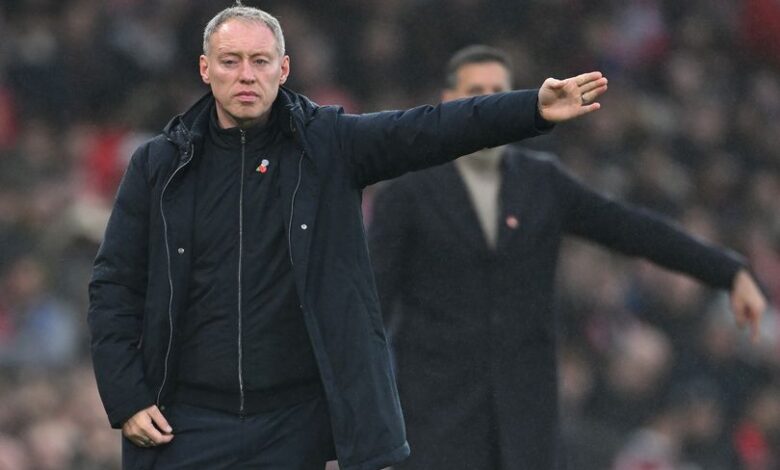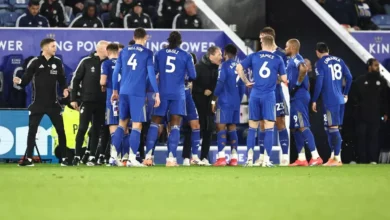Why Harry Winks Hit the Turf in Frustration as Steve Cooper Faces Challenge from Leicester City Fans
Key Takeaways from Leicester City's 3-0 Loss to Manchester United: A Look at the Lackluster Performance, Ineffective Attack, Jamie Vardy's Absence, Boubakary Soumare's Role, and Full-Time Boos

Leicester City’s performance against Manchester United was unique, marking their first match this season without dramatic highs or lows.
There were no stretches of play where they were overwhelmed by chances against them, but there were also no redeeming phases of sustained pressure or intensity that would suggest they could claw back a result.
Ultimately, this consistency across 90 minutes resulted in their heaviest defeat of the campaign.
Once again, City struggled to balance solid defense with an effective attack.
This time, however, it was their defense that held up better, despite the final scoreline.
Surprisingly, the underlying stats reveal it as City’s most disciplined defensive display to date: Manchester United’s expected goals figure was 0.7, the lowest City have allowed in any Premier League game so far.
United managed only six shots inside the box—far below City’s season average of 14 conceded—and just one of those was deemed a ‘big chance’ by Opta, the fewest City have given up.
The three goals resulted from an unfortunate mix of long-range quality finishes by Bruno Fernandes and Alejandro Garnacho, an own goal, and a few defensive lapses.
Yet, for perhaps the first time this season, City’s defensive shape around the box held firm.
Though errors occurred in the lead-up to each goal, City was not picked apart tactically.
If they manage to keep opponents to similar chances regularly, their defensive record will likely improve.
One concern, however, might be that United felt no pressure to create more opportunities, given City’s lack of offensive threat.
With City posing no serious danger, United didn’t need to press for a third goal.
It was also the first match of the season where City lost both halves, and the second half highlighted their offensive struggles.
Although they managed to reach the final third often—recording 123 touches there, their sixth-best in 11 games—penetrating United’s penalty area was a challenge.
They recorded just 10 touches in United’s box, the second-lowest of the season, and, while they made a season-high 15 carries into the final third, they failed to carry the ball into the box at all, a first this season.
This goalless performance was disheartening for fans, especially given the team’s previous resilience in coming back or at least mounting a strong second-half response when trailing.
That fighting spirit, a key quality in their previous games, was notably absent.
So why did City concede three goals despite improved defensive shape? Each goal stemmed from a failure to press the ball.
Perhaps City’s focus on protecting the 18-yard box kept them from pressing attackers more aggressively, but there were also lapses in awareness and decision-making that left them vulnerable.



